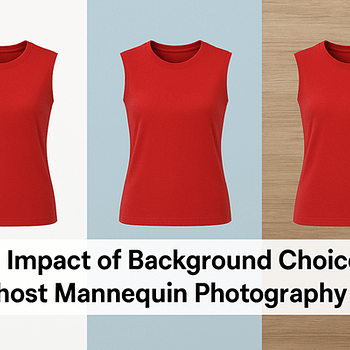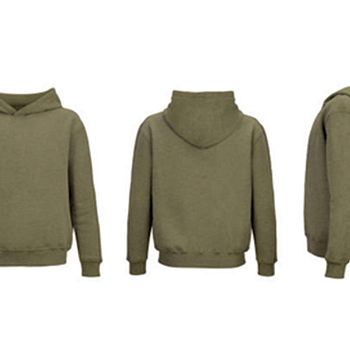How to Photograph Delicate Fabrics with Ghost Mannequin Methods
Ghost mannequin photography is a fantastic technique for showcasing clothing, giving the illusion of an invisible model while highlighting the garment’s fit and shape. However, when working with delicate fabrics such as silk, chiffon, or sheer materials, extra care is needed to capture their beauty without causing damage. In this guide, we’ll share practical tips to help UK photographers master ghost mannequin photography for lightweight or sheer clothing, ensuring professional results while preserving the fabric’s integrity.
Choosing the right mannequin
The foundation of successful ghost mannequin photography starts with selecting an appropriate mannequin. For delicate fabrics, opt for a mannequin with a smooth surface to prevent snagging. Avoid models with textured or rough finishes, as these can catch on fine threads. A matte or satin-finished mannequin also reduces unwanted reflections that might distract from sheer materials. If possible, choose a mannequin with removable sections (such as the chest or arms) to make dressing and undressing easier, minimising stress on the fabric during setup.
Setting up your studio
Proper setup is crucial to protect delicate fabrics and achieve a clean shot. Use a soft, diffused lighting setup to enhance the texture of lightweight materials without harsh shadows. Position two softbox lights at a 45-degree angle in front of the mannequin, with a third light above to illuminate the top. This setup highlights the fabric’s flow without overexposure, which can wash out sheer garments. Place the mannequin on a clean, lint-free surface, and use a white or neutral backdrop to keep the focus on the clothing. Ensure your studio is free of dust or debris that could cling to the fabric.
Handling delicate fabrics safely
When dressing the mannequin, handle the garment with clean hands or wear cotton gloves to avoid transferring oils or dirt. Gently drape the fabric over the mannequin, taking care not to pull or stretch it excessively. For sheer or lightweight materials, use fabric-safe clips or pins to secure the garment in place, but position them in areas that will be edited out later, such as the inner seams. Avoid over-tightening, as this can cause tears or distortion. If the fabric wrinkles easily, a handheld steamer can smooth it out without direct contact, just keep the steamer at a safe distance to prevent water spots.
Photographing and adjusting
When shooting, use a tripod to ensure stability and consistent framing. Set your camera to a low ISO (100–200) to capture the fabric’s details without noise, and use a wide aperture (f/8–f/11) for a sharp depth of field. Take multiple shots from different angles, including front, back, and sides, to fully showcase the garment. For sheer fabrics, adjust the lighting to avoid overexposure, slightly underexposing can help retain the material’s subtle texture. If the fabric appears too transparent, consider layering a neutral undergarment on the mannequin to enhance opacity without altering the look.
Post-processing for a seamless finish
Editing is key to achieving the ghost mannequin effect, especially with delicate fabrics. Use software like Adobe Photoshop to remove the mannequin and create a seamless look. Start by combining shots (e.g., the outer garment with an inner shot of the collar or cuffs) to eliminate visible mannequin parts. Pay attention to the fabric’s natural flow, ensure shadows and highlights align to maintain realism. For sheer materials, adjust the opacity and brightness to enhance visibility without losing texture. Smooth out any minor creases digitally, but avoid over-editing, which can make the fabric look unnatural.
Additional tips
- Test shots: Before the final shoot, take a few test shots to check for snags or lighting issues.
- Storage: Store delicate garments on padded hangers before and after shooting to prevent creasing.
- Backup fabrics: Have a spare piece of the fabric on hand in case of unexpected tears during setup.
Conclusion
Photographing delicate fabrics with ghost mannequin methods requires patience and care, but the results can elevate your clothing photography to a professional level. By choosing the right mannequin, setting up a gentle lighting environment, handling fabrics carefully, and refining your shots in post-processing, you can capture the elegance of lightweight or sheer garments without damage. Follow these tips to create stunning visuals that highlight the beauty of your clothing collection while keeping the materials pristine.




